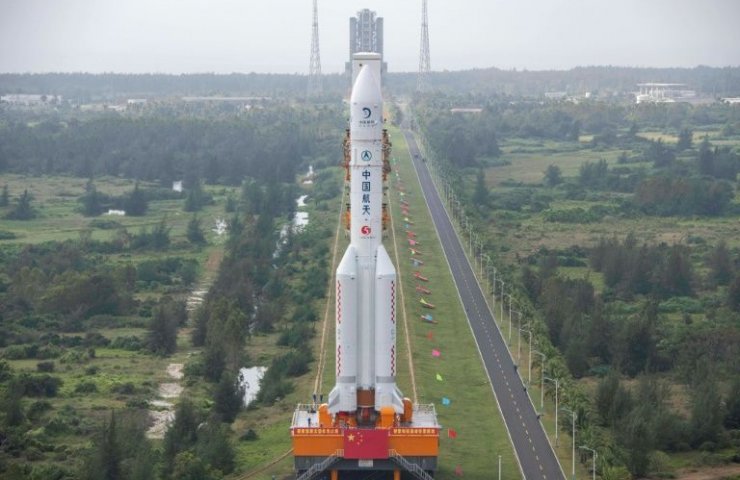China plans to launch an unmanned spacecraft to the moon this week to conduct exploration and return rock samples to Earth - the first attempt to recover lunar minerals since the 1970s.
China's Chang 'e-5 probe, scheduled to launch in the coming days, will attempt to collect 2 kg of samples from a previously unvisited area on a massive lava plain known as Oceanus Procellarum, or Ocean of Storms.
According to James Head, a planetary scientist at Brown University, data from early orbital remote sensing missions of the Moon showed a wider variety of rock types, mineralogy and ages than is represented in the Apollo-Luna specimen collections.
Once in lunar orbit, the probe will launch two vehicles onto the satellite's surface: the lander will drill into the surface, and then transfer soil and rock samples to a mobile device that will take off and dock with the orbital module.
If successful, the lunar soil samples will be sent to a return capsule that will take them to Earth.
China made its first moon landing in 2013. In January 2019, the Chang 'e-4 probe landed on the far side of the moon, becoming the first space probe to perform such a maneuver.
Over the next decade, China plans to create a robotic base station for unmanned research in the south polar region of Earth's satellite. And in 2030, send a crew of several astronauts to the moon.
European scientists announced plans to start mining on the moon as early as 2025, although they will not mine gold and diamonds, but waste-free nuclear energy, which is believed to be worth trillions of dollars.
In the spring of 2020, the USA was presented in the public domain plan of the National Aerospace Agency (NASA) for the exploration of the moon. As follows from the statements presented in it, the main goal of the project is to create a base on the surface of the Earth's satellite, which will serve as a kind of springboard for preparing and sending a manned scientific expedition to Mars.





